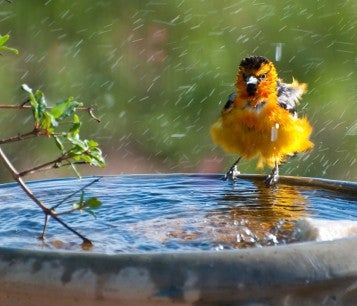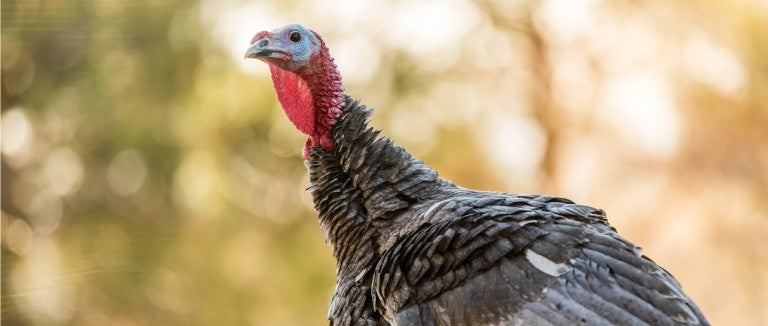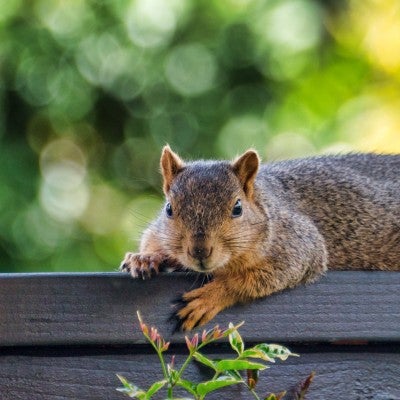Once a rare sight, these days it’s not uncommon to see a flock of wild turkeys in residential neighborhoods. Drawn into urban and suburban areas looking for food and mates, wild turkeys are loved by some but may be a nuisance or source of fear for others. The fear of getting diseases from turkey droppings has been used as an excuse to kill wild turkeys, but killing nuisance turkeys is cruel and doesn't solve the problem (more turkeys will just take their place). Try these effective, non-lethal ways to get rid of unwanted wild turkeys.
Contents
No matter how big or small your outdoor space, you can create a haven for local wildlife. By providing basic needs like water, food and shelter, you can make a difference in your own backyard.

Why shouldn't I feed wild turkeys?
Most conflicts with turkeys occur in areas where they’re being fed by people. The first step towards resolving conflicts with turkeys is to eliminate sources of food such as direct handouts from people, unsecured garbage and spilled bird seed. You may consider removing bird feeders (especially in the spring and summer) until the turkeys move on. Remember to also talk to your neighbors to ensure that they are not feeding turkeys either!
How can I scare away problem turkeys?
Wild turkeys have a “pecking order” of dominance and may view people or pets who act fearful as underlings, chasing them or blocking the entrance to homes or cars. If a wild turkey (or a flock of turkeys) has invaded your yard, driveway or neighborhood, it’s important that you establish your dominance by hazing them. It’s easy to scare turkeys away by making noises (try waving your arms and yelling or blowing a whistle), popping open an umbrella, throwing tennis balls, or dousing the turkey with water from a hose or squirt gun. A leashed dog may also be effective in scaring a turkey away.
It’s important that all members of your family (including children and the elderly) exhibit their dominance over your neighborhood turkeys through hazing in order to have the desired effect. Although wild turkeys may look large and intimidating, they are usually timid and scare easily.
During mating season (February-May), male turkeys may venture into neighborhoods looking for females to mate with. They may respond aggressively to reflective surfaces (such as windows, automobile mirrors or polished car doors), thinking that their reflection is an intruding male turkey. In this case, haze the turkey away and then temporarily cover the reflective surface if possible.
How can I encourage roosting turkeys to move elsewhere?
Wild turkeys usually roost in trees, but in urban areas they are also known to roost on roofs or on decks. The good news is that wild turkeys are cautious birds that are pretty easy to scare away. To break up turkey roosts on decks or roofs, making loud noises or spraying them with a water hose is usually all that’s needed, although sometimes a follow-up treatment might be necessary. You may also use motion-activated devices (which will scare turkeys away with a sharp burst of water) or anti-perching devices (which limit or prevent perching on your roof).
How can I protect my garden from turkeys?
Most of the crop and garden damage blamed on wild turkeys is actually caused by other animals (such as raccoons, groundhogs, foxes, deer, or squirrels). Still, you can keep wild turkeys from feasting on your garden or shrubs by using a motion-activated scare device or by protecting plants and vegetables with hardware cloth. (Try to avoid the use of netting, which can entrap birds and other animals.)
Additional tip: Watch out for turkeys on the road!
Wild turkeys sometimes forage along the road, so watch for these feathered pedestrians crossing the road without checking for cars and look carefully for stragglers, as these birds travel in groups.

